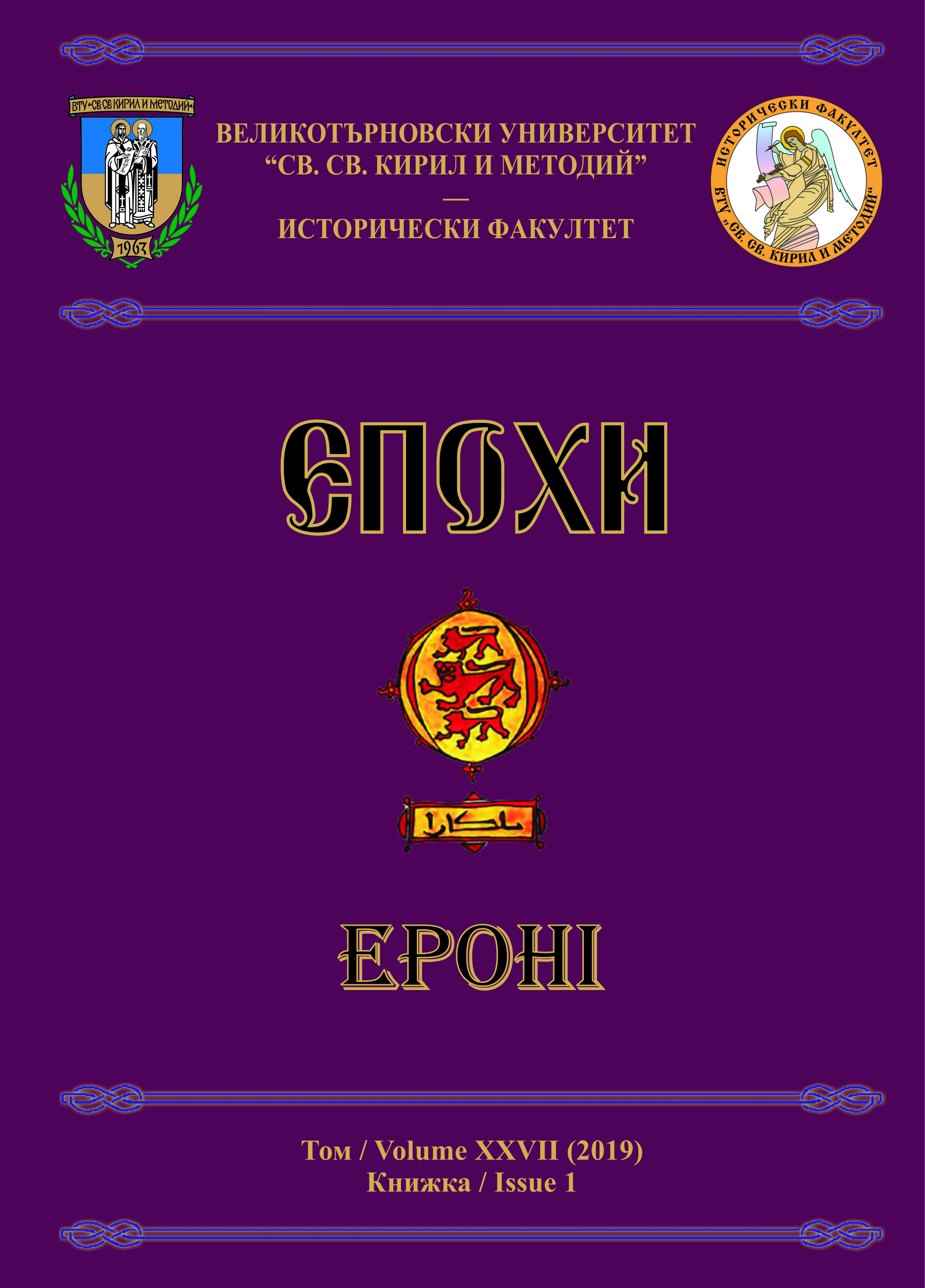Тамгата – хералдичен знак на прабългарския владетелски род Дуло в неговата представителна функция
The Heraldic Sign Tamgha of the Proto-Bulgarian Ruler’s Clan Dulo in its representative function
Author(s): Ivan DobrevSubject(s): History, Cultural history, Diplomatic history, Ethnohistory, Political history, Middle Ages, 6th to 12th Centuries
Published by: Великотърновски университет „Св. св. Кирил и Методий”
Keywords: Asparuh; Balčik; balik; Dulo; HuK-Hungar; Kamčiya; kanartigin; Kem; Krum; Kubrat; Proto-Bulgarians; šavar; tamgha; urns; Varna; walls
Summary/Abstract: In essence and function, the heraldic sign tamgha of the Proto-Bulgarian ruler’s clan Dulo is a sign of ownership with one primary-basic function – the possession, and two secondary-derived and additional functions – the representative and the protective (apotropheic). Khan Asparuh ordered the tamgha of the Dulo clan to be carved on a suitable stone and to be built over the main gate of the Belgorod Fortress as a sign that there is a descendant of the Duloclan, who is also a ruler, a khan of the entrusting Proto-Bulgarian tribes. He directed the repair of the Drustar fortress and ordered the tamgha of Dulo clan to be carved on the fortress walls. The wall in front of the village of Byala, Varna district is the last and the most southern wall that Khan Asparuh builds. On it the tamgha of the Dulo clan is carved between two Runic letters, so the whole inscription translates as The State of Dulo. The urns with the ashes of the khans and their wives from the First Bulgarian Kingdom are stored in a special pit into the most hidden underground tunnel connected to the palace of Khan Krum. The title канартигин is formed on the basis of the Proto-Bulgarian expression *каган-ирт-тикин, literally “prince-after-kagan”, i.e. “crown prince”.
Journal: Епохи
- Issue Year: XXVII/2019
- Issue No: 1
- Page Range: 51-79
- Page Count: 29
- Language: Bulgarian

